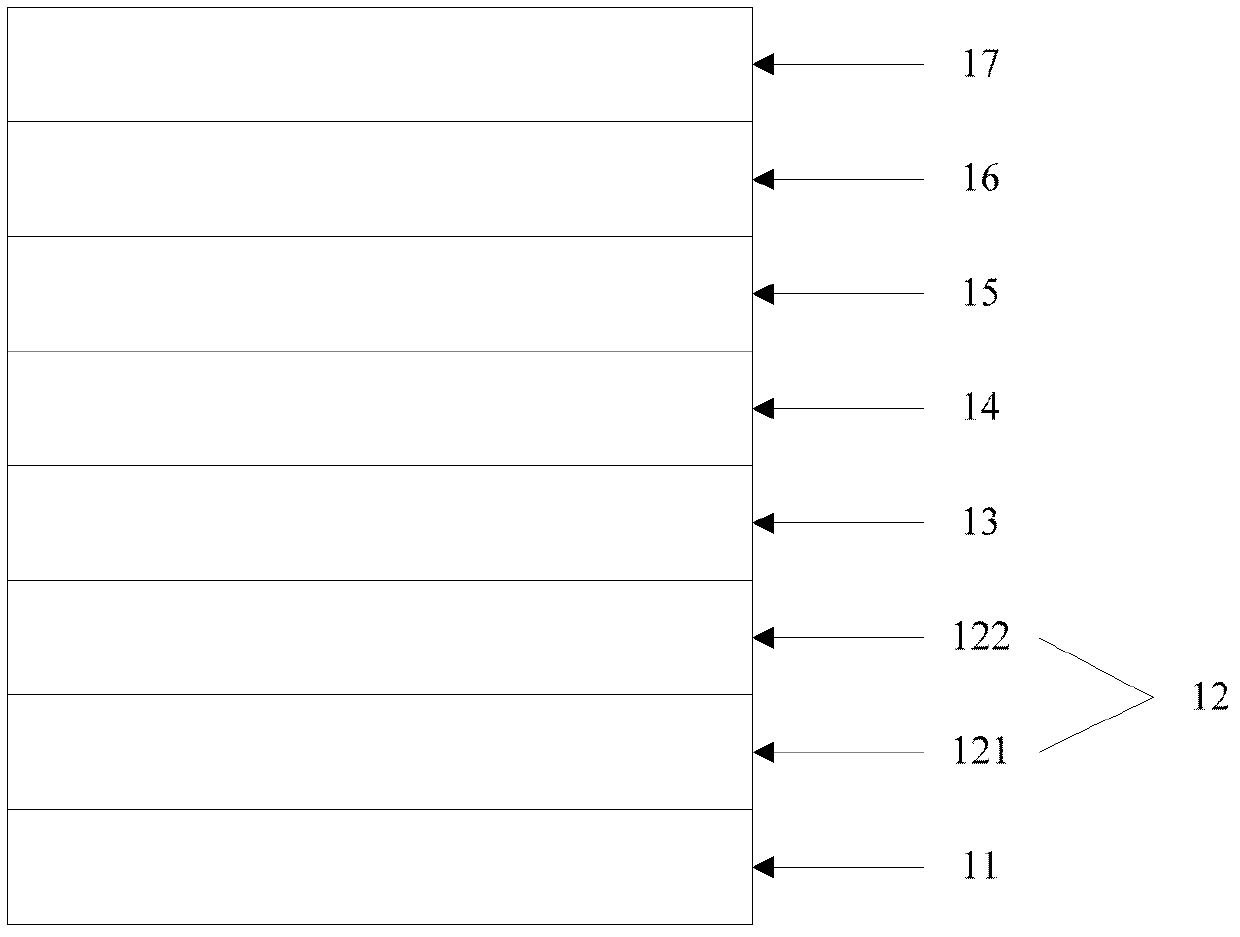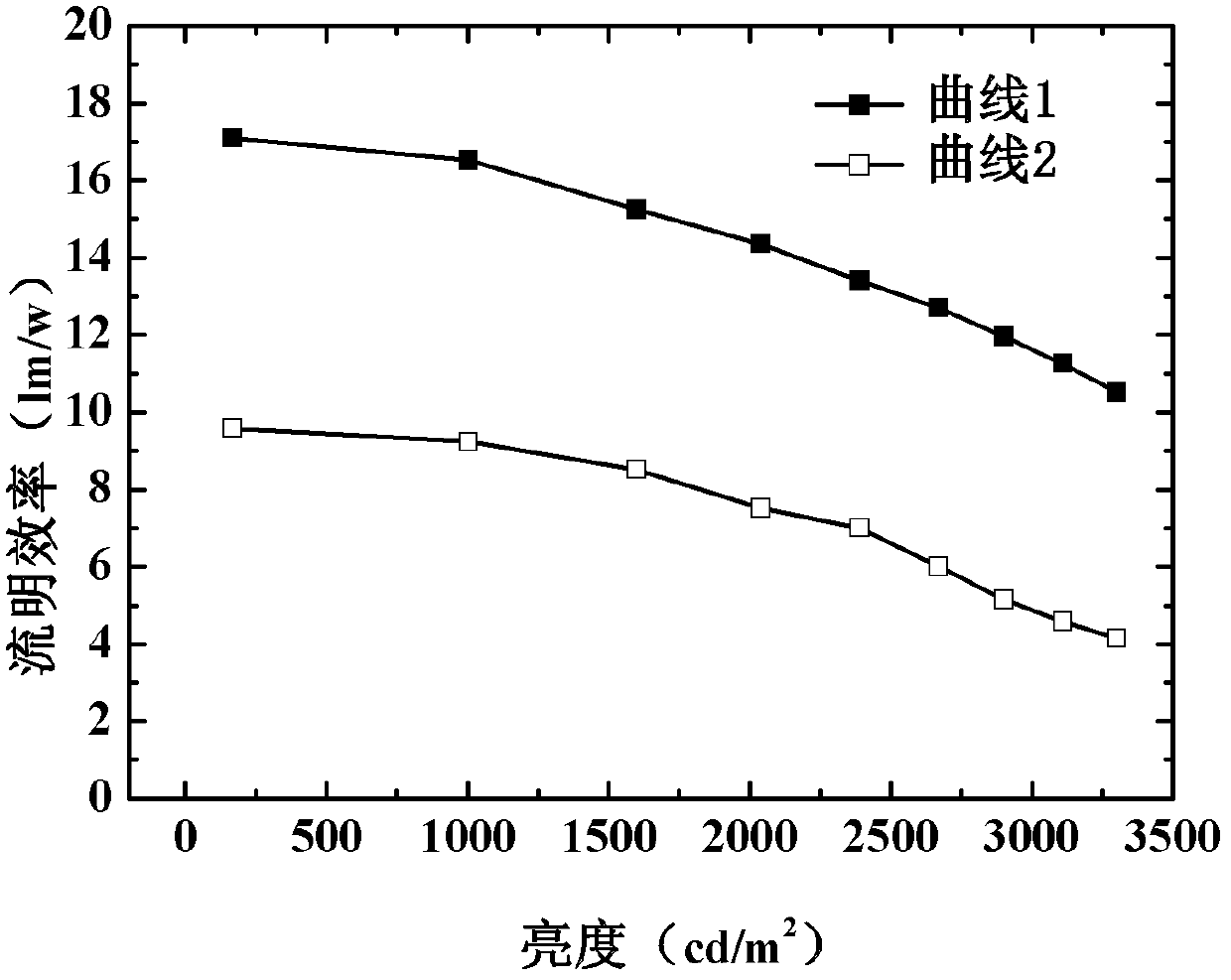Organic light-emitting device and manufacturing method thereof
An electroluminescent device and luminescence technology, which is applied in the direction of electric solid-state devices, semiconductor/solid-state device manufacturing, electrical components, etc., can solve the problems of low luminous efficiency, high cost, and light loss of devices, and achieve improved front luminous intensity, Enhanced electrical conductivity and improved light extraction efficiency
- Summary
- Abstract
- Description
- Claims
- Application Information
AI Technical Summary
Problems solved by technology
Method used
Image
Examples
preparation example Construction
[0039] The preparation method of the above-mentioned laminated organic electroluminescent device comprises the following steps:
[0040] S1. Clean the glass substrate sequentially with detergent, deionized water, acetone, ethanol, and isopropanol for 15 minutes to remove organic pollutants on the glass surface
[0041] S2. Using an evaporation process, evaporating a metal layer with a thickness of 5-20 nm on the surface of the cleaned glass substrate;
[0042] S3. Using a spin coating process, spin coating an activated carbon suspension solution on the surface of the metal layer to prepare an activated carbon layer with a thickness of 1-100 μm;
[0043] S4, using the evaporation process again, sequentially stacking the evaporation hole transport layer, light emitting layer, electron transport layer, electron injection layer and cathode layer on the surface of the activated carbon layer;
[0044] After the process steps are completed, the organic electroluminescent device is p...
Embodiment 1
[0053] The organic electroluminescent device structure of the present embodiment: glass / (Ag / activated carbon) / TCTA / TPBi:Ir(ppy) 3 / TAZ / LiF / Ag.
[0054] The preparation process of the organic electroluminescent device is as follows:
[0055] Firstly, ultrasonically clean the glass substrate with detergent, deionized water, acetone, ethanol, and isopropanol for 15 minutes each to remove organic pollutants on the glass surface;
[0056] Evaporate metal layer (material is Ag, thickness is 10nm) on the glass substrate surface after cleaning; Then spin-coat active carbon suspension solution (the mass percentage of active carbon is 20%) on the surface of metal layer, make the active carbon layer that thickness is 10 μm ;
[0057] Then on the surface of the activated carbon layer, the vapor-deposited hole transport layer (the material is TCTA with a thickness of 50nm), the light-emitting layer (the material is TPBi:Ir(ppy) 3 , ie Ir(ppy) 3 Doped into TPBi, and Ir(ppy) 3 Doping ma...
Embodiment 2
[0060] The organic electroluminescent device structure of the present embodiment: glass / (Al / activated carbon) / TCTA / TPBi:Ir(MDQ) 2 (acac) / Bphen / Cs 2 CO 3 / Au.
[0061] The preparation process of the organic electroluminescent device is as follows:
[0062] Firstly, ultrasonically clean the glass substrate with detergent, deionized water, acetone, ethanol, and isopropanol for 15 minutes each to remove organic pollutants on the glass surface;
[0063] Evaporate metal layer (material is Al, thickness is 5nm) on the glass substrate surface after cleaning; Then spin-coat activated carbon suspension solution (the mass percent of activated carbon is 5.21%) on the surface of metal layer, the activated carbon layer that makes thickness is 1 μm ;
[0064] Subsequently, on the surface of the activated carbon layer, the vapor-deposited hole transport layer (the material is TCTA with a thickness of 60nm), the light-emitting layer (the material is TPBi:Ir(MDQ) 2 (acac), ie Ir(MDQ) 2 (a...
PUM
 Login to View More
Login to View More Abstract
Description
Claims
Application Information
 Login to View More
Login to View More - R&D
- Intellectual Property
- Life Sciences
- Materials
- Tech Scout
- Unparalleled Data Quality
- Higher Quality Content
- 60% Fewer Hallucinations
Browse by: Latest US Patents, China's latest patents, Technical Efficacy Thesaurus, Application Domain, Technology Topic, Popular Technical Reports.
© 2025 PatSnap. All rights reserved.Legal|Privacy policy|Modern Slavery Act Transparency Statement|Sitemap|About US| Contact US: help@patsnap.com


